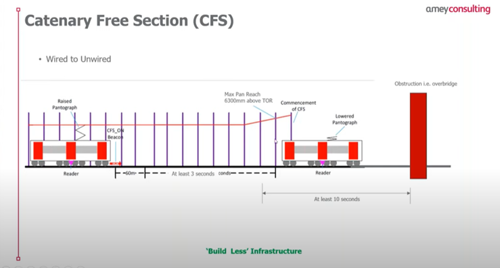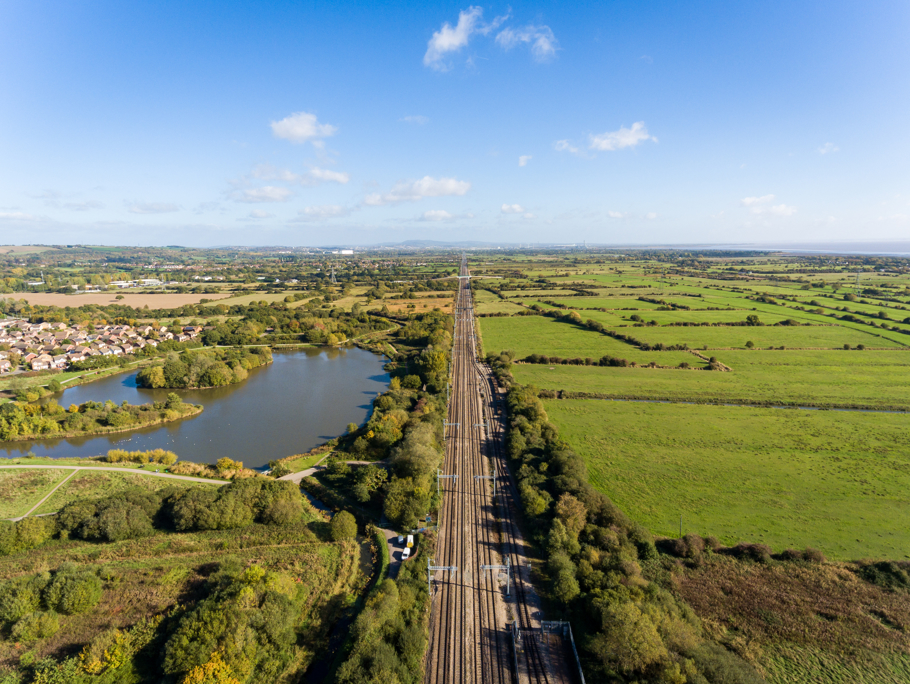Amey's proposal for the smart electrification of the Core Valley Lines revolutionises traditional approaches and holds valuable lessons for future projects
Amey has an overarching contract with Transport for Wales (TfW) to transform the Wales & Borders rail network. A key part of the programme is the renewal of the Core Valley Lines (CVL), a network running north of Cardiff Queen Street to stations including Treherbert, Aberdare, Merthyr Tydfil, Coryton,Rhymney, and Ninian Park – Radyr branch. The CVL is to be electrified in order to provide a modern, metro-style service.
The electrification is a complex undertaking involving a comprehensive resignalling of the network, construction of a new control centre, and installation of a new telecoms system. Amey Infrastructure Wales (AIW) is responsible for managing the programme, with designs developed by Amey Consulting and Amey Rail undertaking the construction works. The initial budget was set at approximately £750 million.
TfW’s aspirations for the CVL include an increase in the number of trains to four per hour in each direction, improved journey times and reduced carbon emissions. The designers needed to ensure their plans for the network satisfied these requirements while minimising capital expenditure and keeping tight control of the budget. However, the ageing infrastructure of the CVL presented a major challenge, potentially leading to additional civil engineering works and increased carbon emissions.
The problem centred on the need to install new overhead contact system (OCS) to power the new generation of trains planned for the network. Unfortunately, the CVL has numerous historic structures such as bridges, tunnels and canopies that are too low to safely accommodate live overhead wires. There are also several listed assets, including two viaducts, that require planning consents before equipment can be attached to them.
The conventional solution for obstructions that are too low for electrification is to demolish and replace them, or lower the track (or both). However, Amey realised the number of structures involved meant such works would be costly, bad for the environment, and cause significant delays to the programme. Obtaining consents to mount equipment on listed structures would also be a time-consuming process.
Amey conducted a value engineering process to address the issues and find smart solutions that would satisfy TfW’s requirements while keeping costs within acceptable limits. The result is a unique proposal that Amey calls ‘discontinuous electrification’.
Put simply, rather than attempt to run live OCS across the entirety of the network, portions of track with obstructions such as low bridges are left current-free. This is achieved through use of permanently earthed sections (PES), where the overhead cables are not live, and the train temporarily switches to other forms of power. It is important to note, that where Amey have provided PES or catenary-free sections because of low or sensitive structures/bridges, they can easily replace it with a full 25kV delivery system in the future should this be needed (e.g., brides replaced, etc.). Furthermore, where installation of OCS is problematic, the designers have opted for catenary-free sections (CFS), where cables carrying the current are fed around the obstruction.
This style of smart electrification is made possible by the advanced nature of the new hybrid trains planned for the CVL. There are two main types: the Stadler Flirt, a tri-mode train capable of running off battery and diesel in addition to OCS; and the Stadler City Link, a bi-mode metro-style train, powered by OCS and battery. The trains are able to accelerate through current-free sections driven by their onboard battery. This type of discontinuous electrification is ideally suited to slower/branch lines with less power demand, as opposed to HSTs and freight trains on primary routes where battery power with current technology isn’t efficient/robust enough.
This approach has many benefits. It removes the need for numerous civil engineering interventions, helping to contain costs and reduce carbon emissions during the construction phase. It avoids the frustrating process of applying for consents to attach OCS equipment to listed structures. Anywhere the presence of exposed high voltage conductors is problematic, it provides a potential solution. It is ideally suited to the particular demands of CVL electrification.
However, designing such a system is a much more complex proposition for Amey’s OCS engineers than traditional electrification. It is no longer a straightforward question of providing power from point A to point B.
In addition to designing the individual PES and CFS schemes and integrating them into the overall plan, the engineers must ensure that the power demands of the trains can be met as they move around the network. In particular, there must be adequate opportunities for onboard batteries to recharge to ensure the timetable can be delivered, and trains are not left stranded in permanently earthed sections.
Other technical issues have arisen, such as the presence of additional high voltage cables to carry the feed around unwired sections – this has required specialist modelling to deal with the potential capacitance problem. Since the quality of insulators is vital to the operation of the permanently earthed sections, Amey has worked with the supplier to improve the reliability of the insulator design approved for use on the railways.
Amey’s engineers have been aided by the in-house development of a bespoke traction power modelling tool that performs the necessary battery power calculations and helps the engineers to validate their OCS designs. In fact, Amey’s proficiency with ad hoc modelling has been key not just to winning product acceptance for the proposed discontinuous electrification plan, but to identifying opportunities to introduce efficiencies and cut costs.
For example, accurate power modelling has highlighted parts of the network where battery charging infrastructure can be reduced, or permanently earthed sections can be extended. Overall, Amey estimates that the value engineering process has saved the client millions of pounds, restricting the rise in budget to within ten per cent of the original figure.
Net zero carbon emissions for rail depends on electrification. The CVL transformation programme has provided Amey with a unique opportunity to design and provide an innovative approach that has not only benefited the CVL, but could facilitate future electrification schemes.

